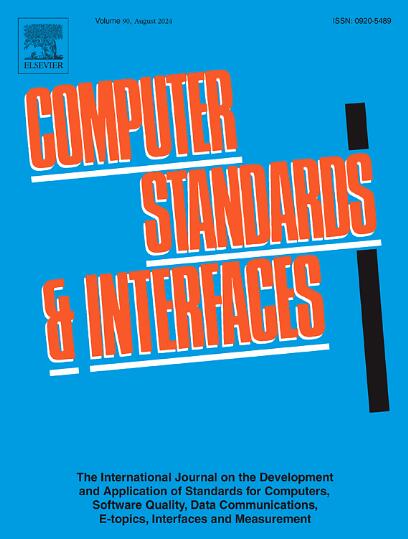整合深度学习和数据融合,实现高级按键动态身份验证
IF 4.1
2区 计算机科学
Q1 COMPUTER SCIENCE, HARDWARE & ARCHITECTURE
引用次数: 0
摘要
通过加强用户身份验证协议,特别是在易受复杂网络威胁的关键基础设施中,我们提出了一种先进的方法,它集成了基于深度学习的模型和数据融合技术,应用于分析按键动态。随着对强大安全措施的需求日益增长,尤其是在关键基础设施环境中,传统的身份验证机制往往无法应对高级威胁。我们的方法侧重于按键的独特行为生物特征,这为改进用户身份验证流程提供了大有可为的机会。我们开发了一种基于数据融合的方法,利用击键动态的独特特征与深度学习技术相结合来改进用户身份验证系统。利用数据融合和深度学习的能力,所提出的方法不仅能捕捉到按键动态中固有的复杂行为生物识别特征,还能解决因密码长度和打字风格不同而带来的挑战。我们在多个固定文本数据集上进行了广泛的实验,包括卡内基梅隆大学数据集、KeyRecs 数据集和 GREYC-NISLAB 数据集,共计约 54,000 条密码记录。在具有不同密码长度的各种数据集上进行的综合实验表明,我们的方法在用户身份验证方面具有可扩展性和准确性,可显著提高关键基础设施的安全性。通过使用基于插值的数据融合技术将按键数据标准化为统一长度,并采用具有三重损失函数的连体神经网络,未见过的融合数据取得了 0.13281 的最佳相等错误率。深度学习与数据融合的整合能有效地泛化到不同的用户配置文件中,证明了它在不同场景中验证用户身份的适应性和准确性。这些发现对于提高从访问个人设备到保护关键基础设施等敏感应用的安全性至关重要。本文章由计算机程序翻译,如有差异,请以英文原文为准。
Integrating deep learning and data fusion for advanced keystroke dynamics authentication
By enhancing user authentication protocols, especially in critical infrastructures vulnerable to complex cyberthreats, we present an advanced approach that integrates a deep learning-based model and data fusion techniques applied to analyze keystroke dynamics. With the growing need for robust security measures, especially in critical infrastructure environments, traditional authentication mechanisms often fail to cope with advanced threats. Our approach focuses on the unique behavioral biometric characteristics of keystrokes, which offers promising opportunities to improve user authentication processes. We have developed a data fusion-based methodology that utilizes the unique features of keystroke dynamics combined with deep learning techniques to improve user authentication systems. Using the capabilities of data fusion and deep learning, the proposed methodology not only captures the complex behavioral biometrics inherent in keystroke dynamics but also addresses the challenges posed by varying password lengths and typing styles. We conducted extensive experiments on several fixed-text datasets, including the Carnegie Mellon University dataset, the KeyRecs dataset, and the GREYC-NISLAB dataset, with a total of approximately 54,000 password records. Comprehensive experiments on various datasets with different password lengths have shown that our approach is scalable and accurate for user authentication, which significantly improves the security of critical infrastructure. By using interpolation-based data fusion techniques to standardize the keystroke data to a uniform length and employing a Siamese neural network with a triplet loss function, the best equal error rate of 0.13281 was achieved for the unseen fused data. The integration of deep learning and data fusion effectively generalizes to different user profiles, demonstrating its adaptability and accuracy in authenticating users in different scenarios. The findings are crucial for improving security in sensitive applications, ranging from accessing personal devices to protecting critical infrastructure.
求助全文
通过发布文献求助,成功后即可免费获取论文全文。
去求助
来源期刊

Computer Standards & Interfaces
工程技术-计算机:软件工程
CiteScore
11.90
自引率
16.00%
发文量
67
审稿时长
6 months
期刊介绍:
The quality of software, well-defined interfaces (hardware and software), the process of digitalisation, and accepted standards in these fields are essential for building and exploiting complex computing, communication, multimedia and measuring systems. Standards can simplify the design and construction of individual hardware and software components and help to ensure satisfactory interworking.
Computer Standards & Interfaces is an international journal dealing specifically with these topics.
The journal
• Provides information about activities and progress on the definition of computer standards, software quality, interfaces and methods, at national, European and international levels
• Publishes critical comments on standards and standards activities
• Disseminates user''s experiences and case studies in the application and exploitation of established or emerging standards, interfaces and methods
• Offers a forum for discussion on actual projects, standards, interfaces and methods by recognised experts
• Stimulates relevant research by providing a specialised refereed medium.
 求助内容:
求助内容: 应助结果提醒方式:
应助结果提醒方式:


